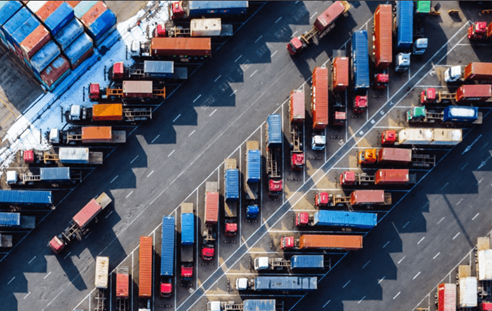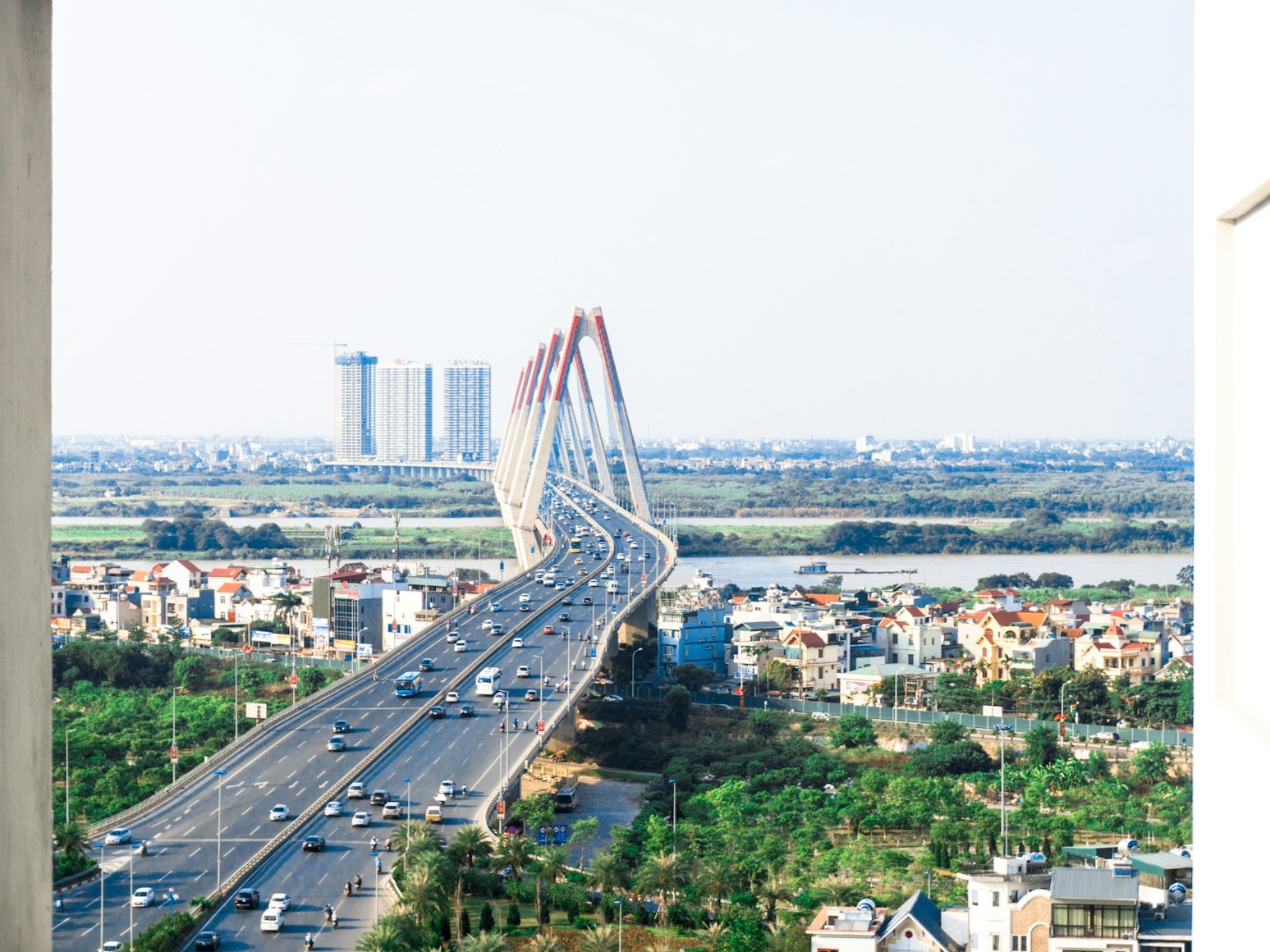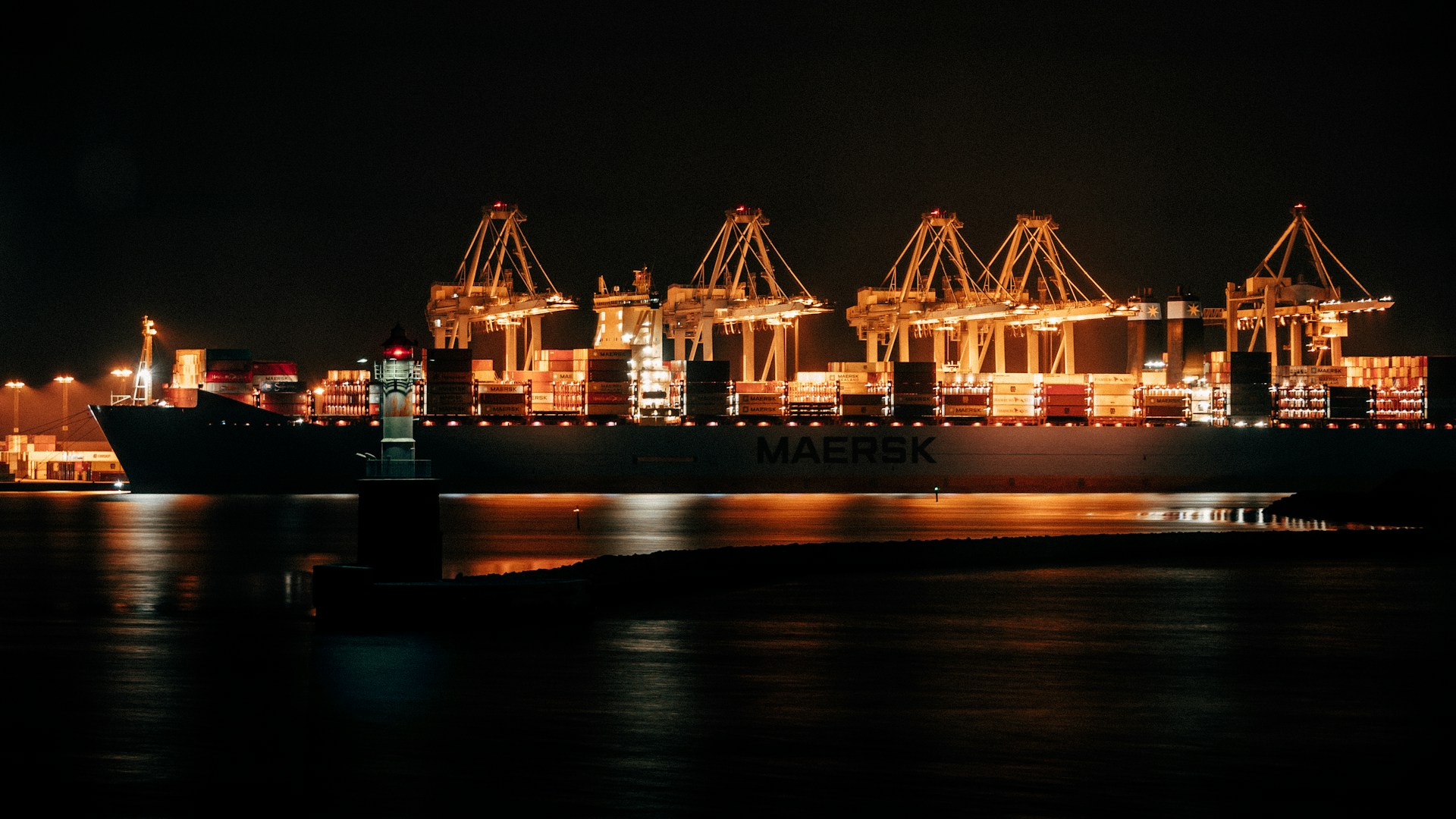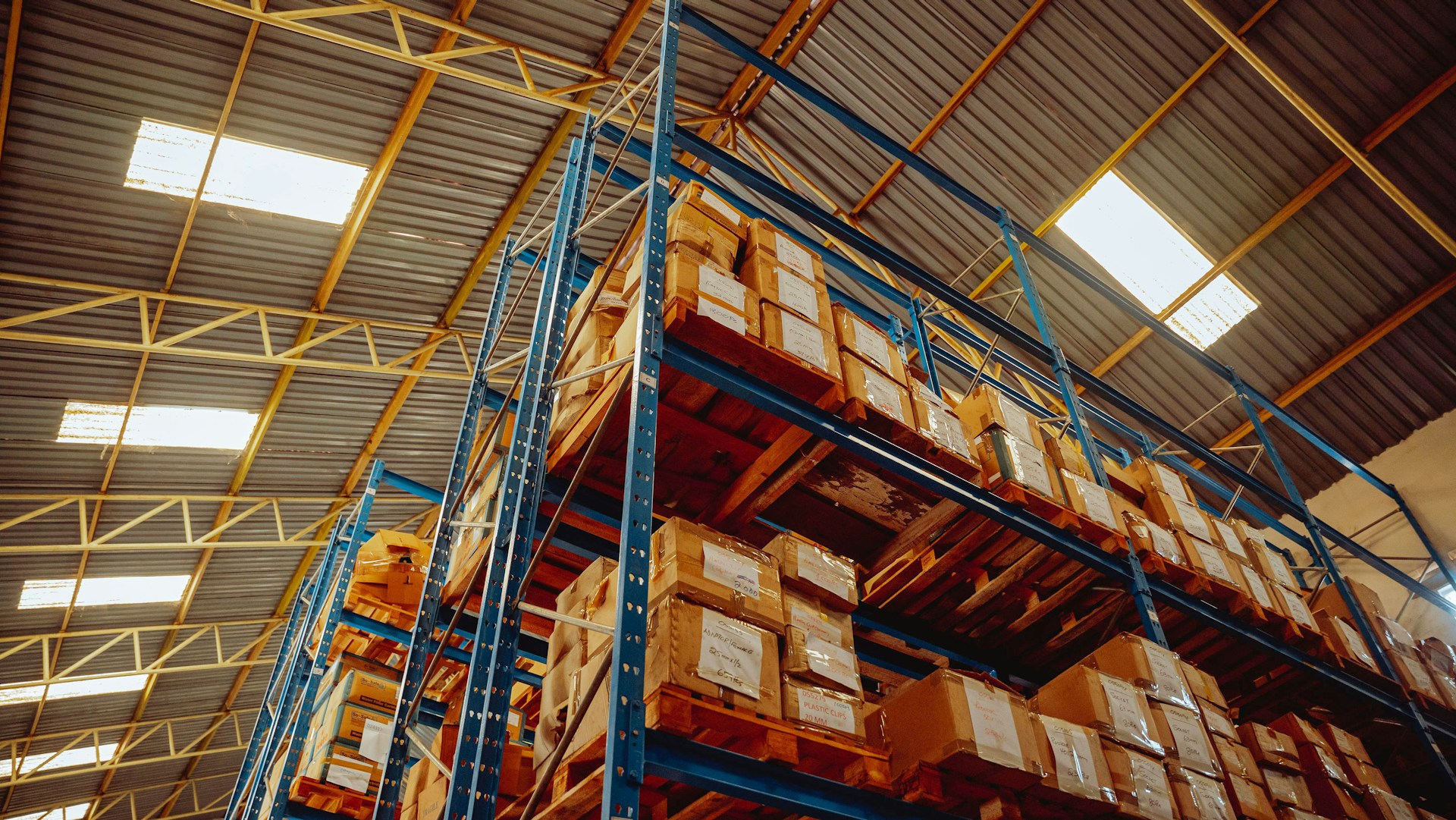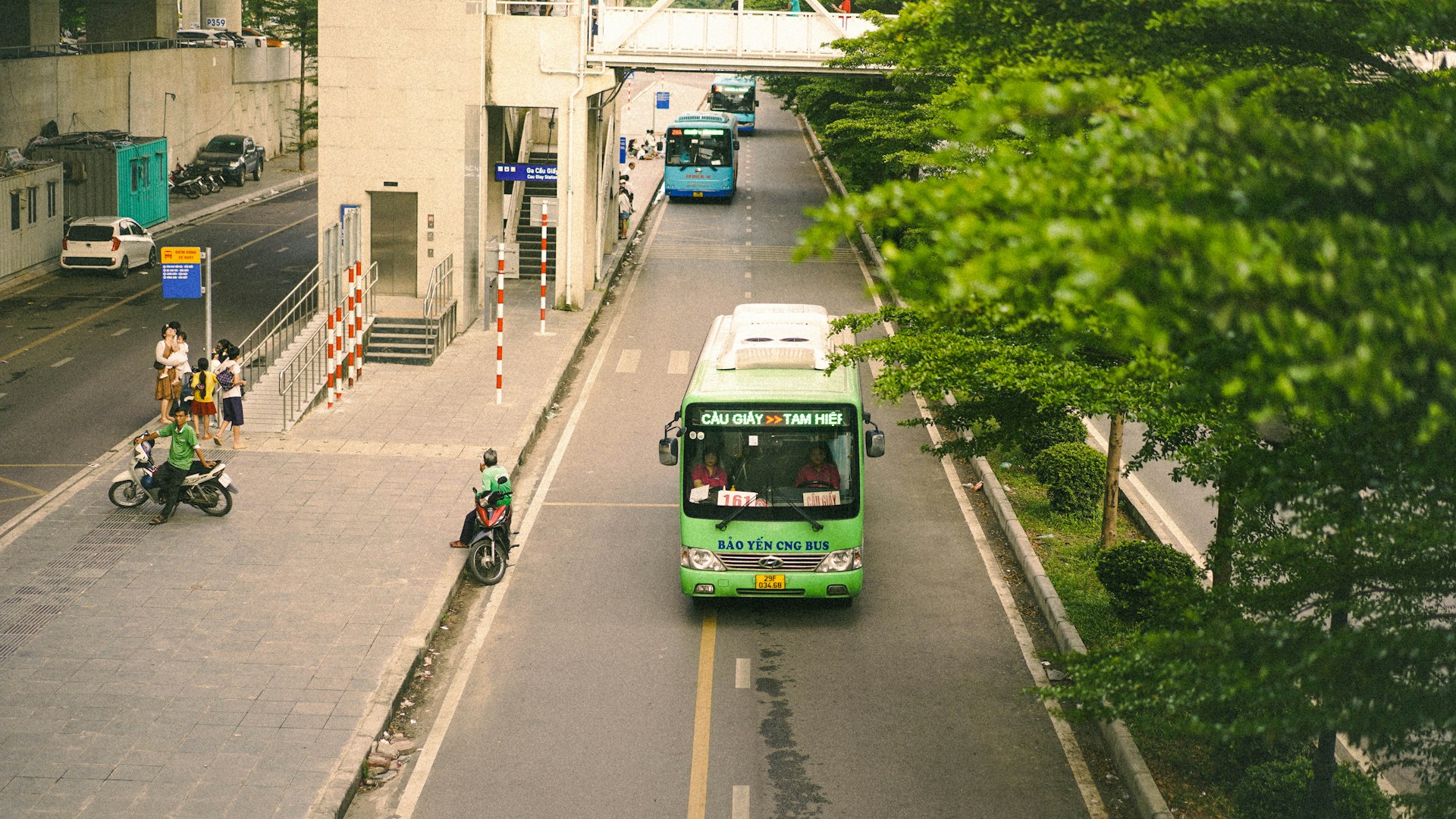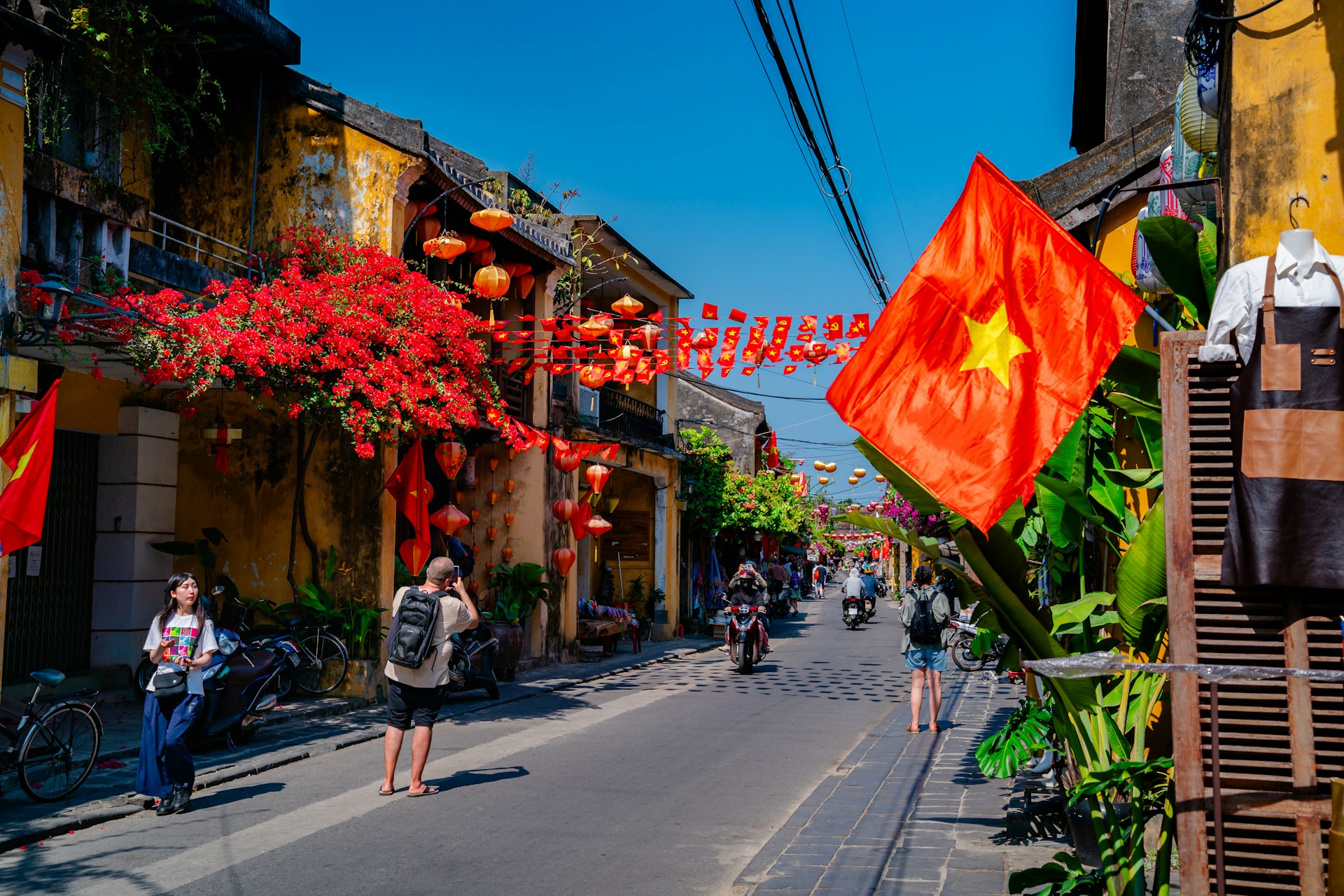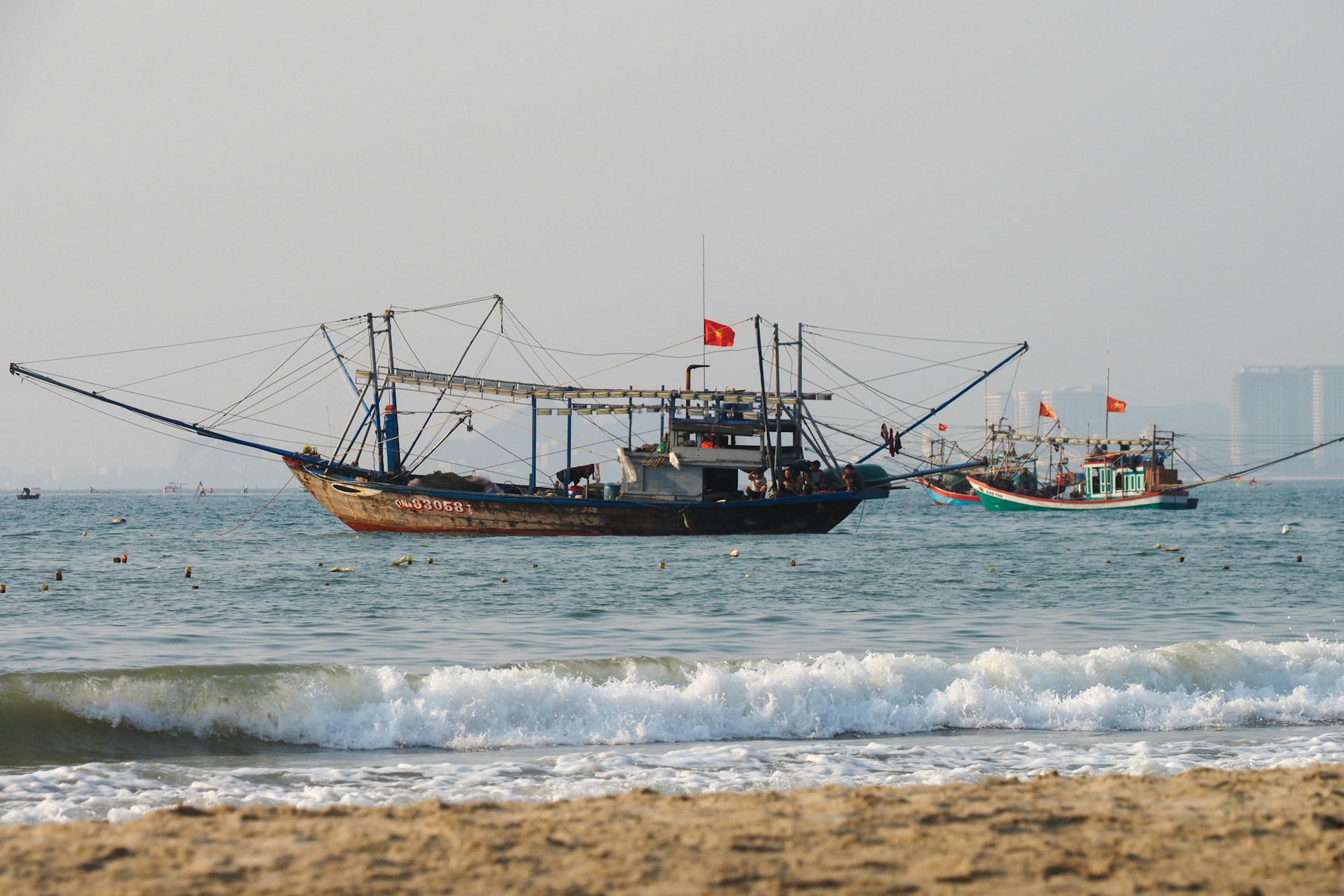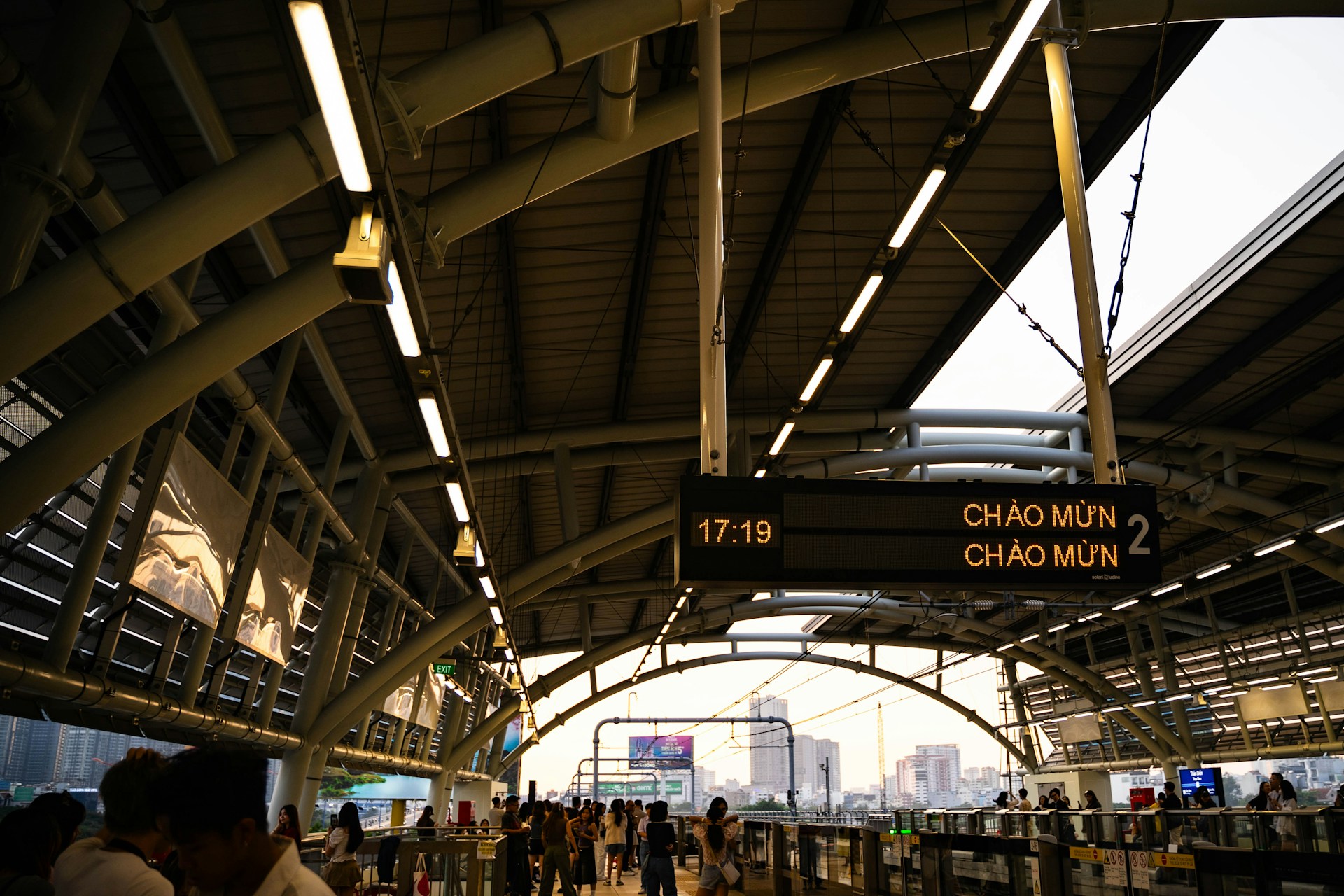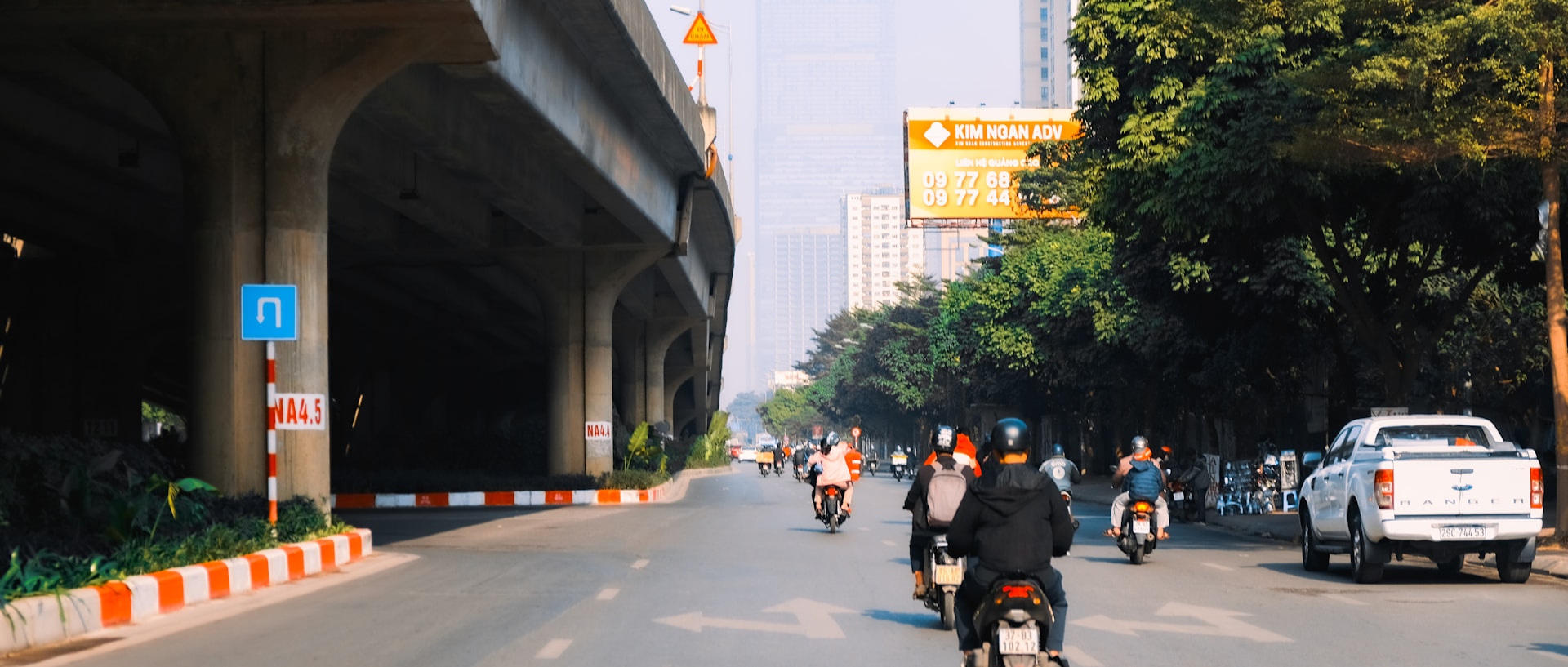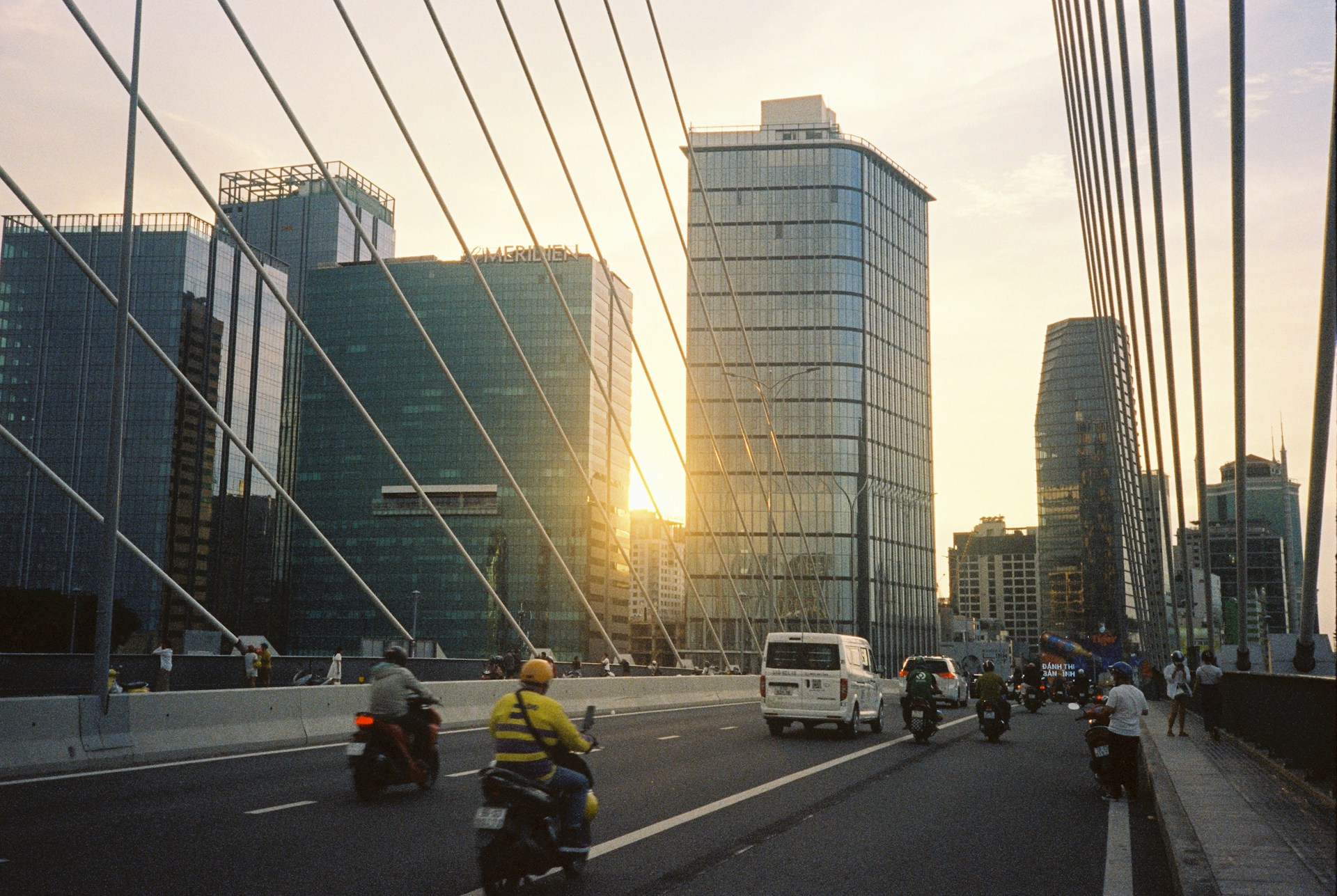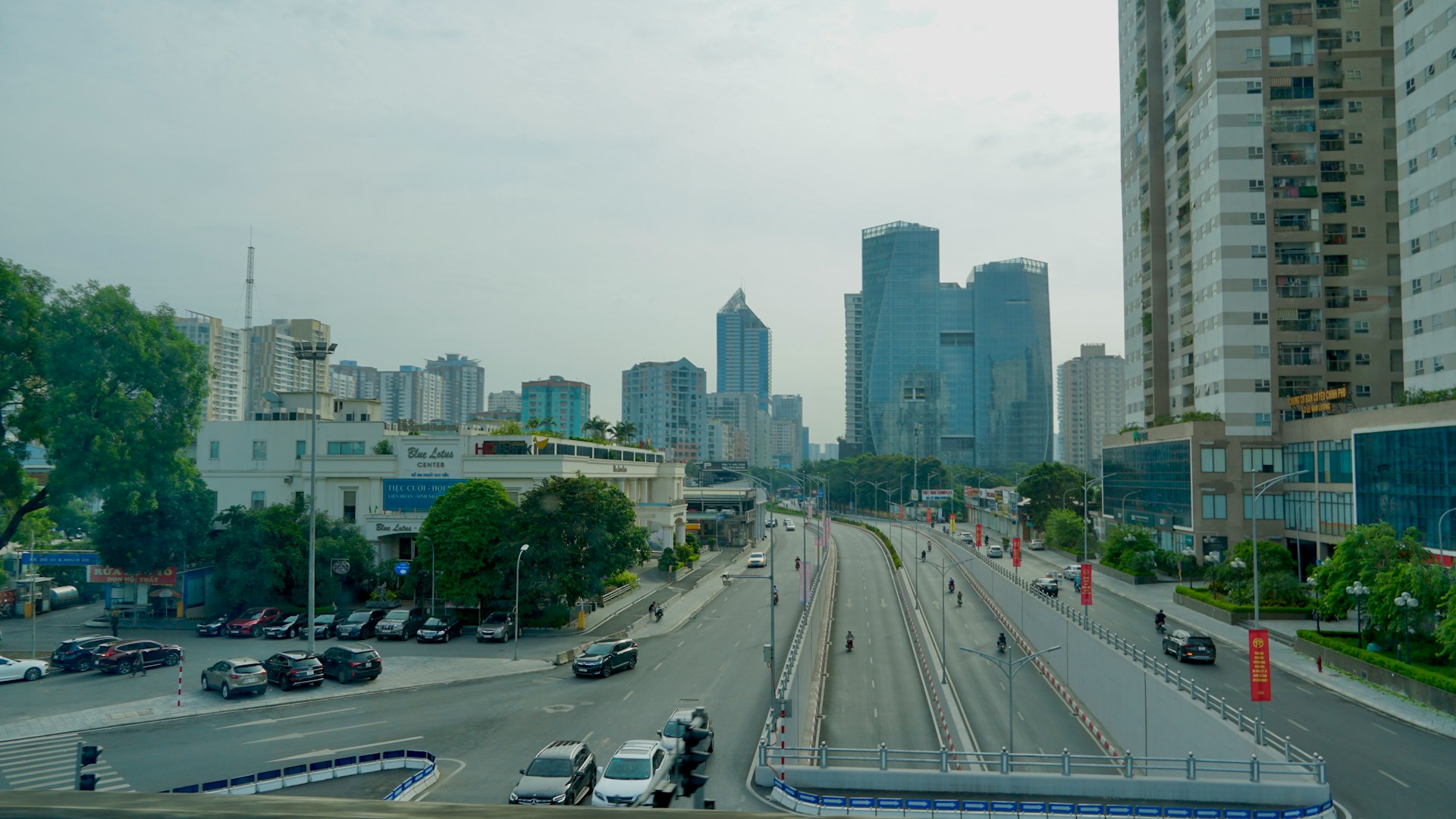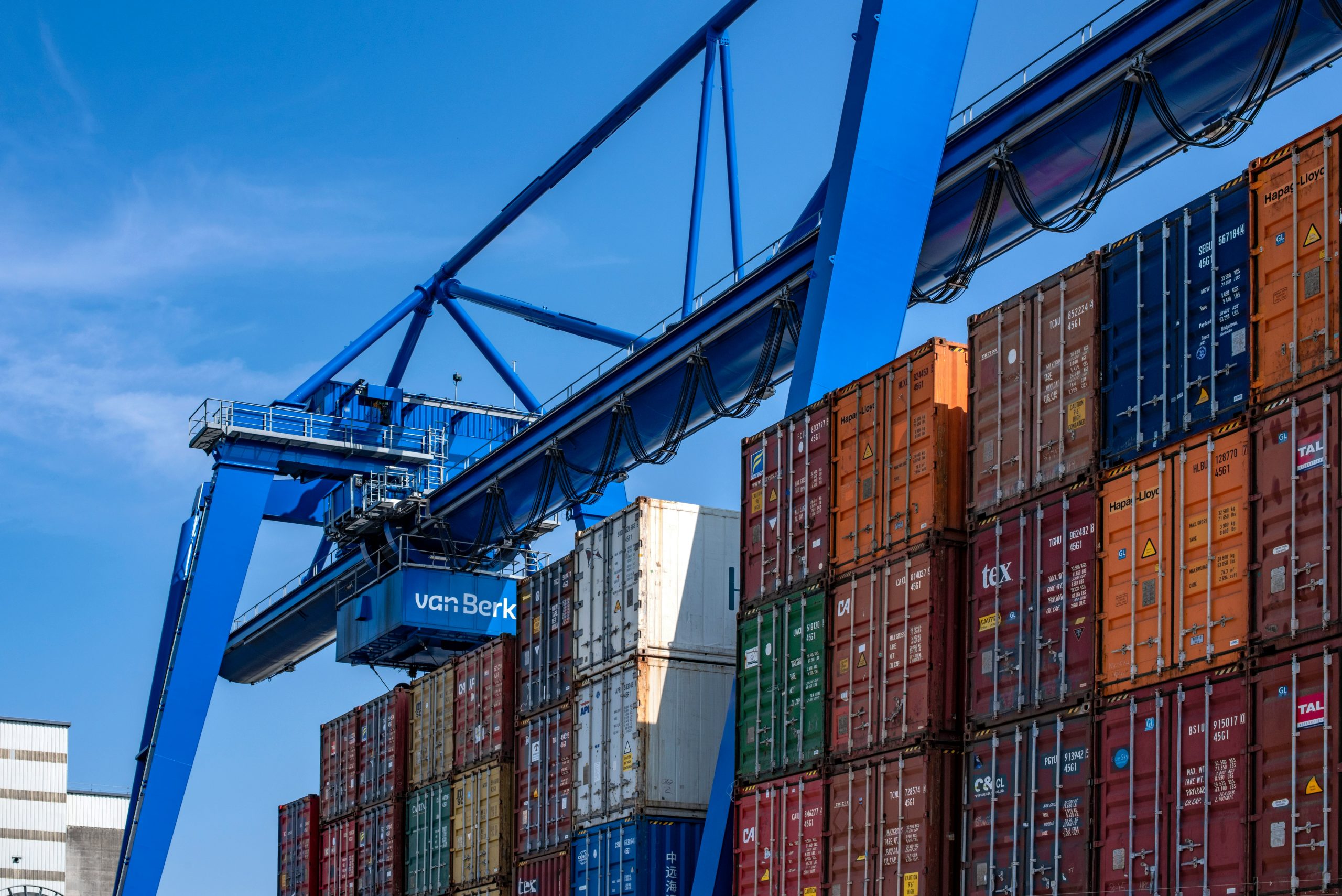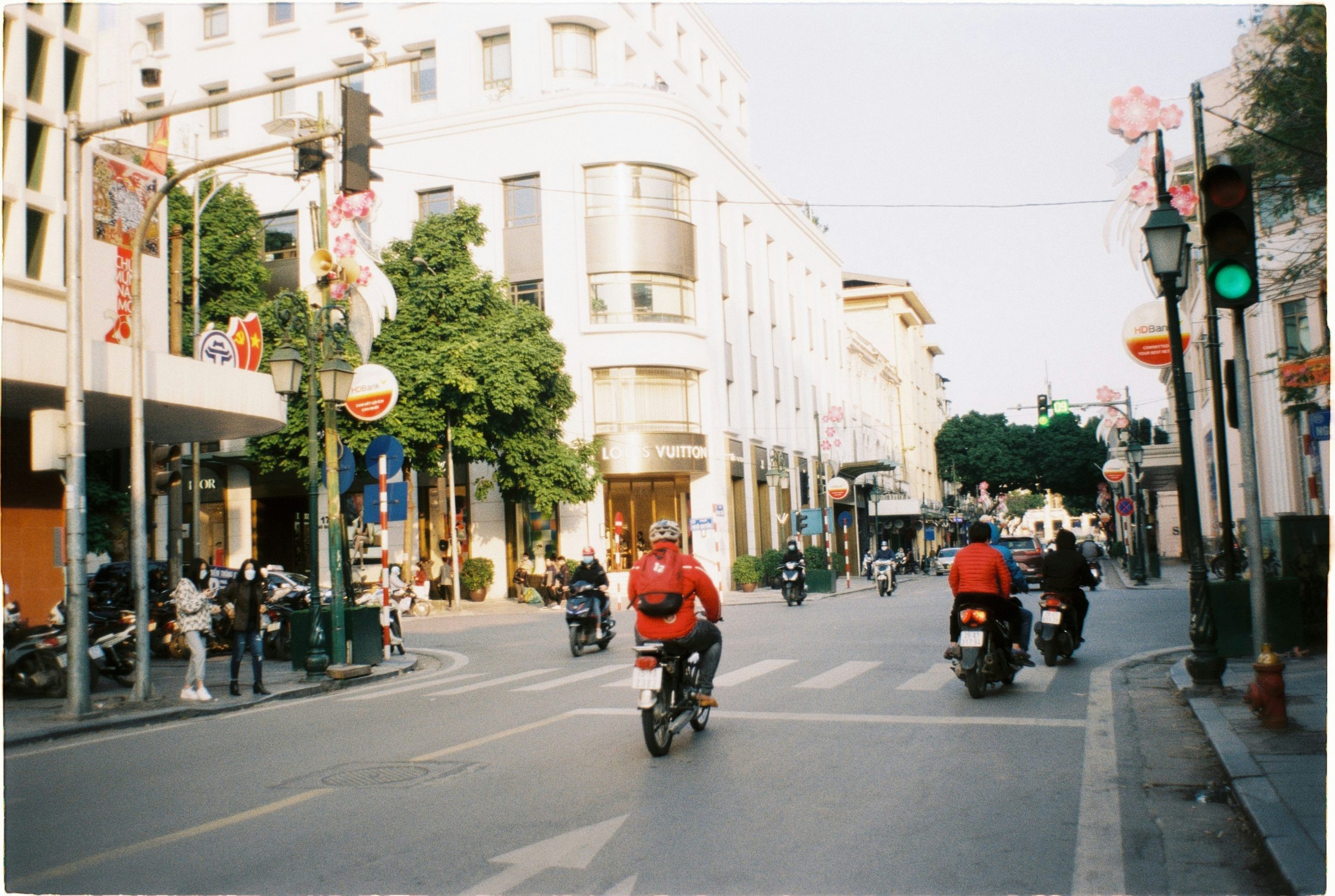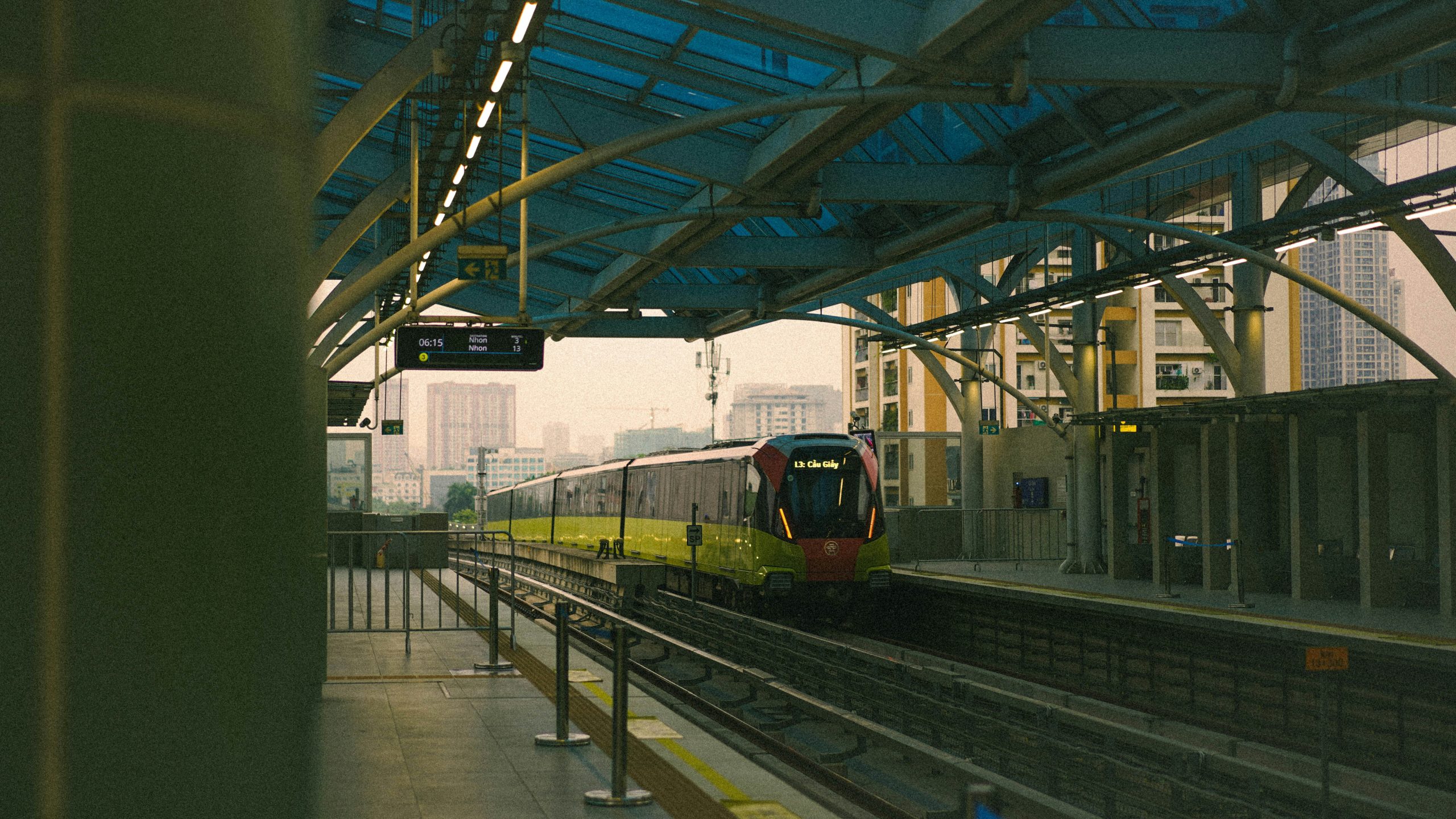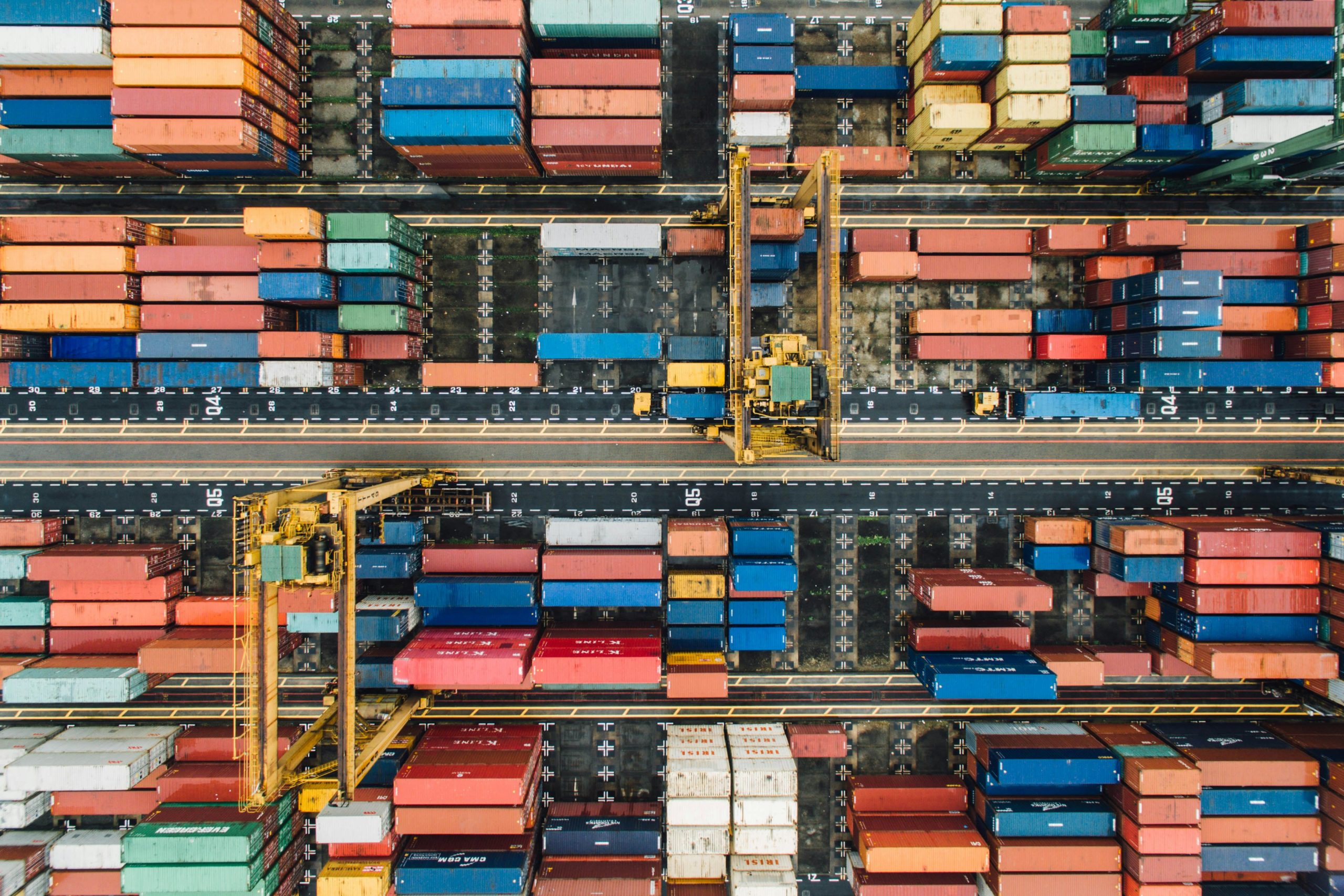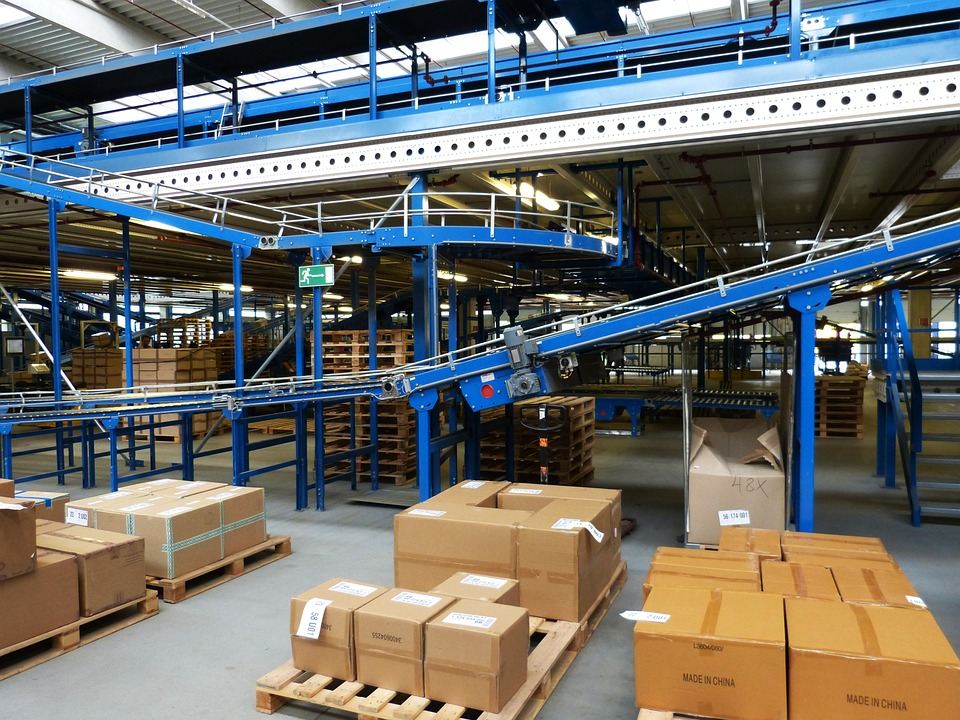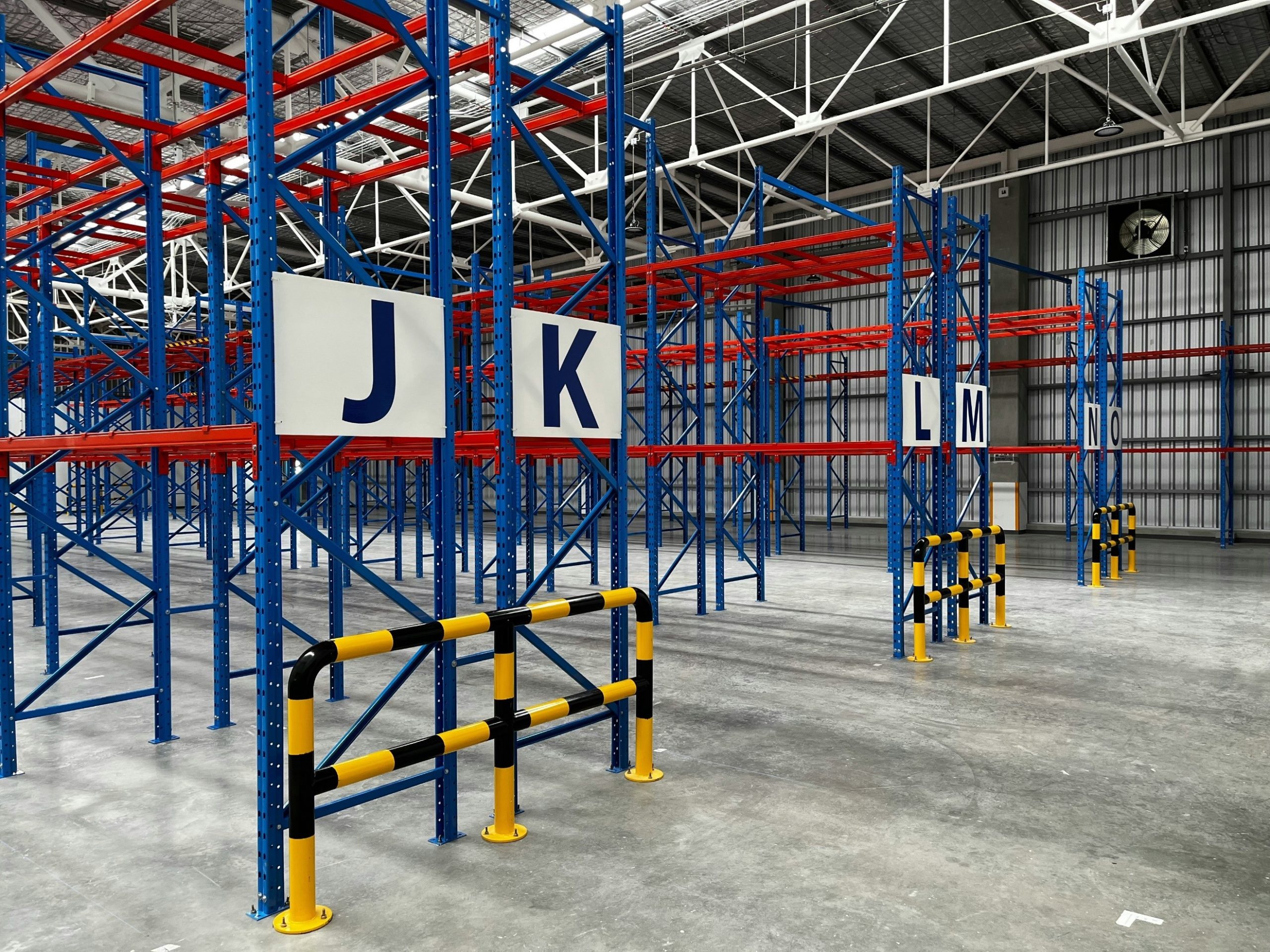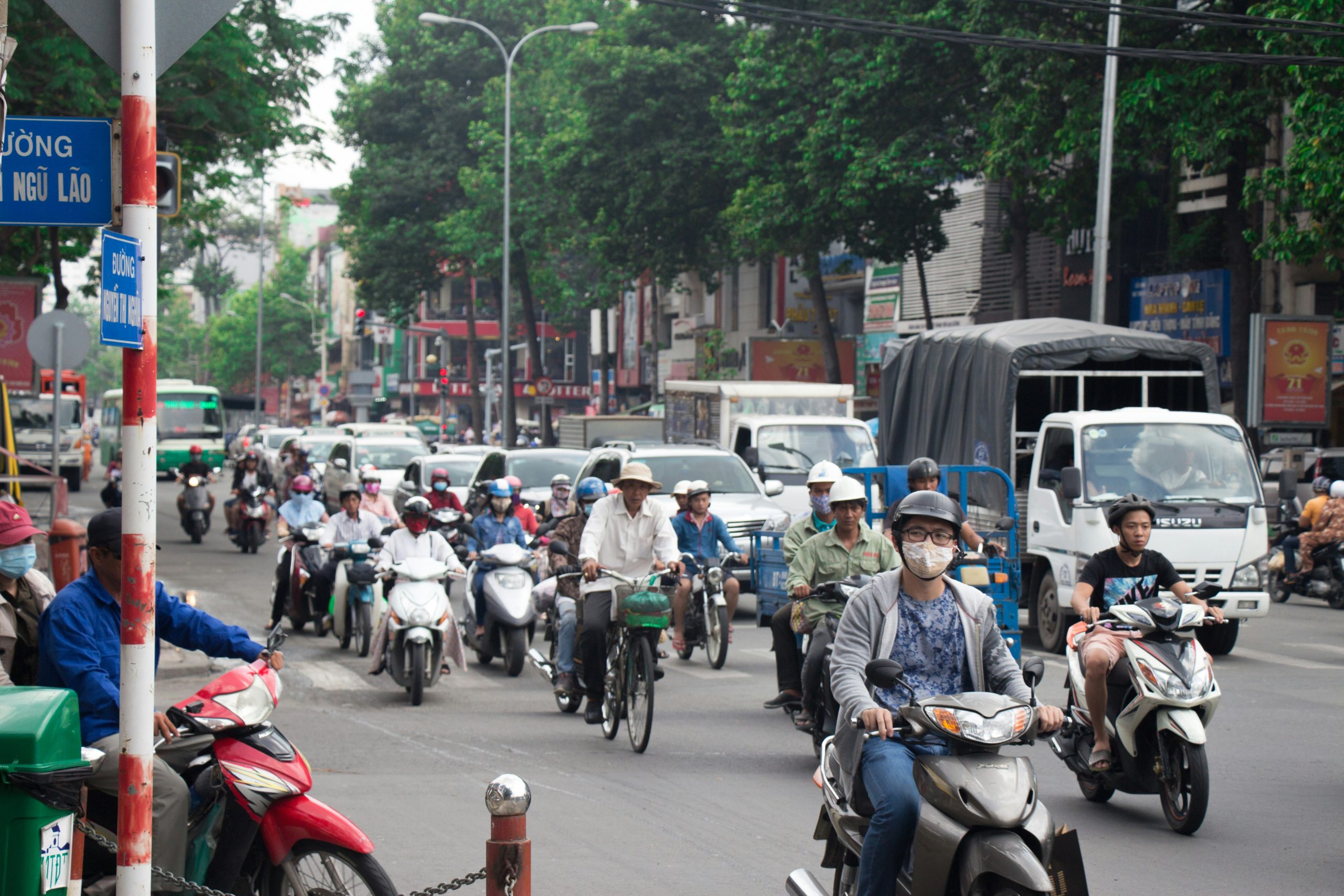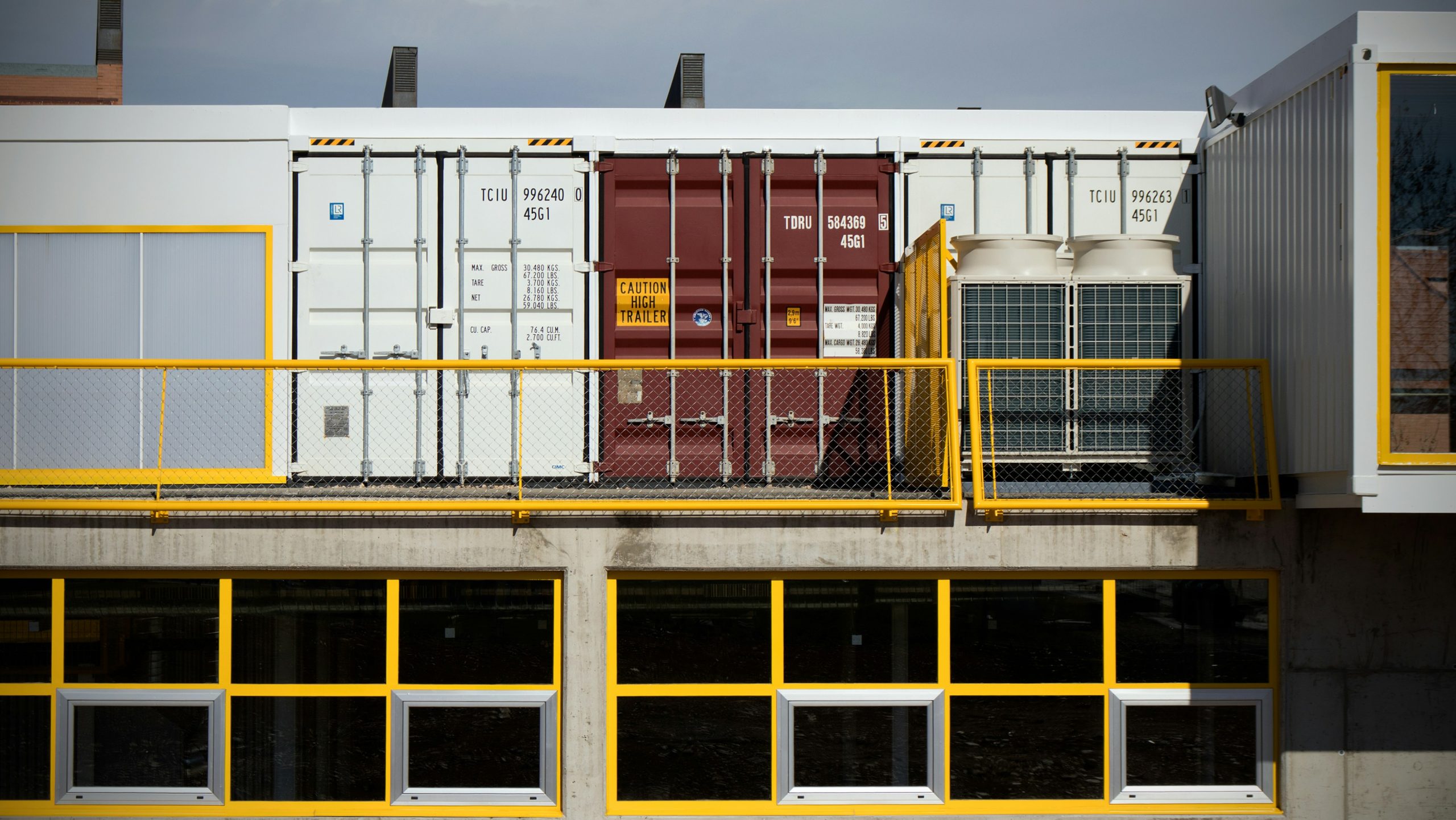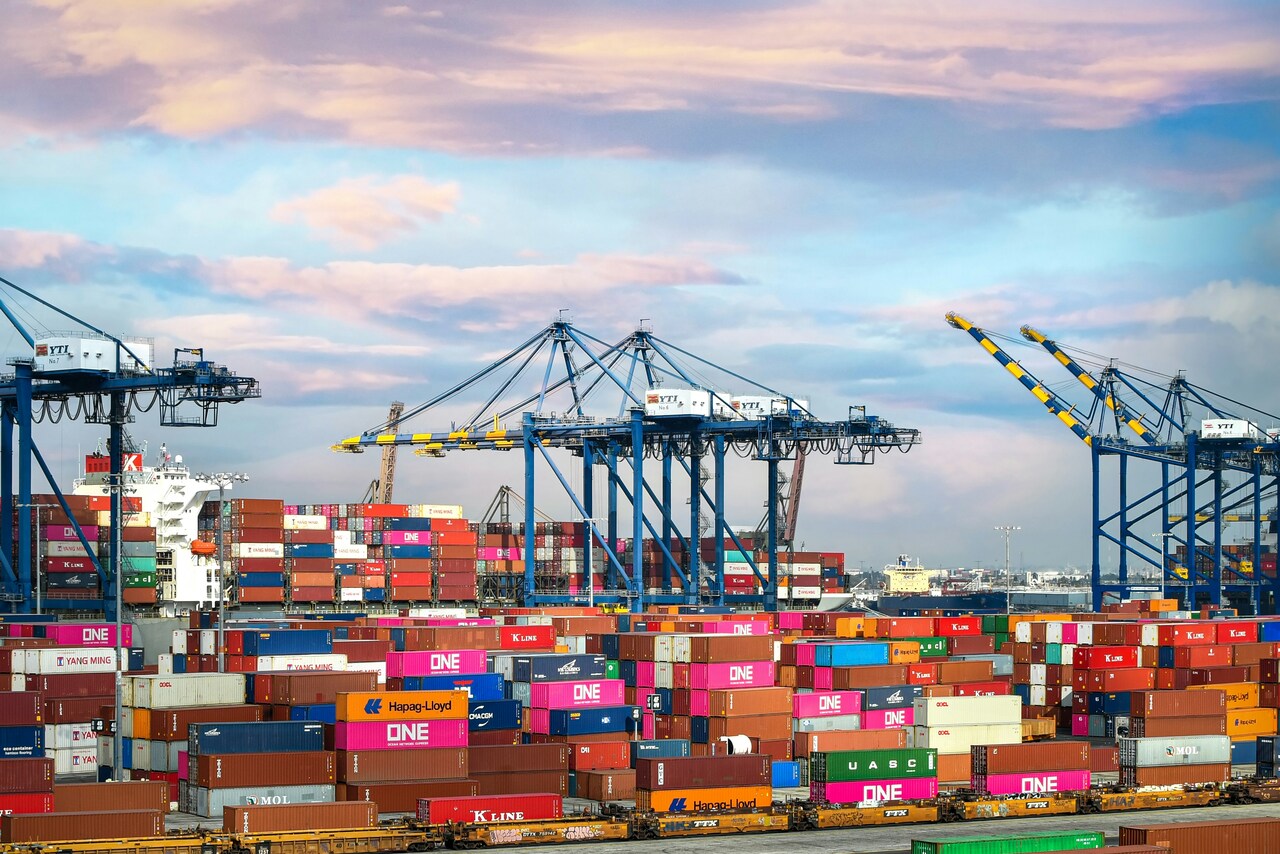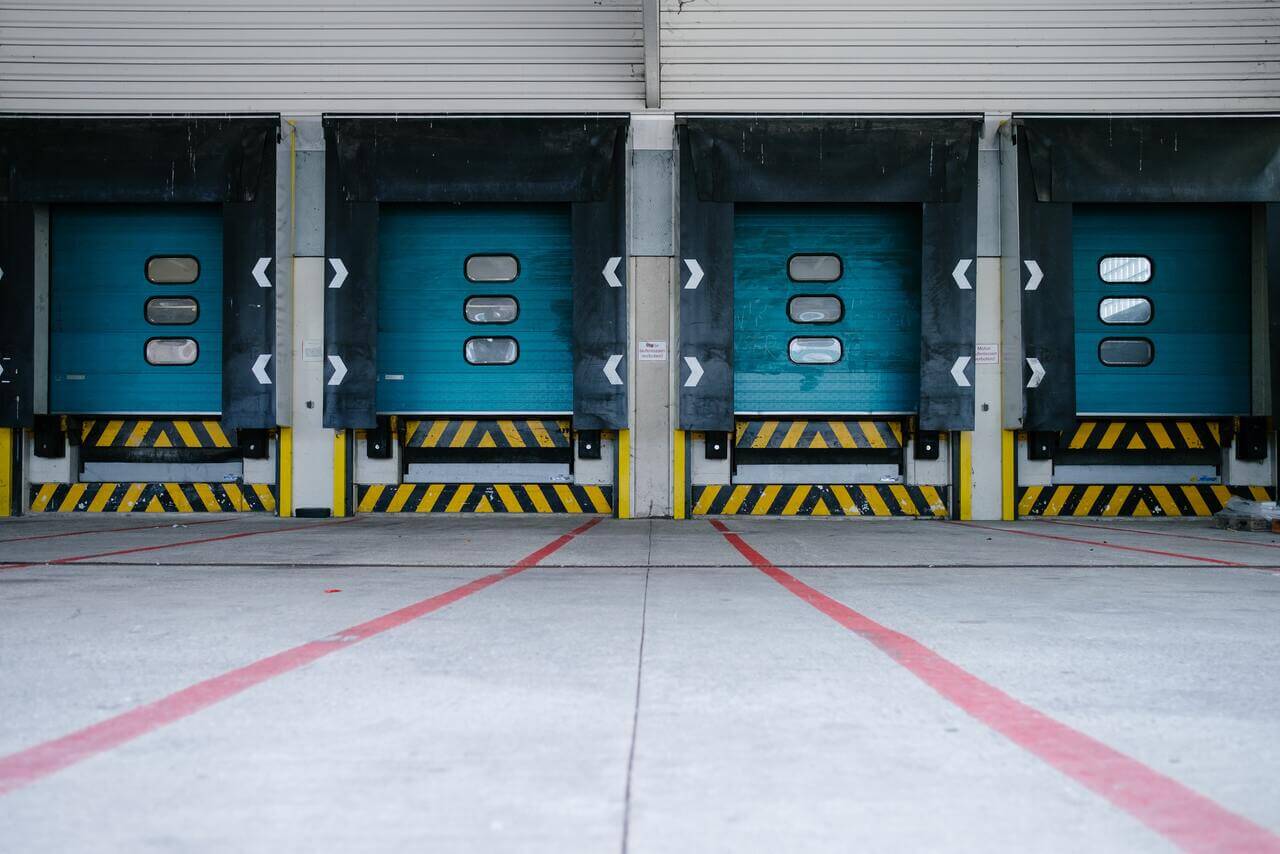
2410월2025
최신 뉴스 및 보고서 / 베트남 브리핑
댓글: 댓글 없음.
도로교통질서 및 안전법 2024(2025년 1월 1일 시행)의 도입으로 정점을 찍은 새로운 도로교통법 체계, 시행령 41/2023/TT-BGTVT와 같은 기술 지침 문서, 그리고 시행령 168/2024/NĐ-CP에 따른 과징금의 급격한 인상은 베트남 물류 산업에 전략적 전환점을 마련했습니다. 이러한 규정들은 관용 기반 운송 모델의 종식을 의미하며, 기업들이 절대적 준수 모델로 전환하도록 강요합니다.
출처: Kctcvn.com
2025년 새로운 도로 교통 법률 체계: 기반 및 핵심 변경 사항
새로운 도로교통법 체계는 두 가지 주요 구성 요소로 구성됩니다. 첫 번째는 2024년 도로교통질서 및 안전법으로, 차량 운전자 관리, 안전한 교통 문화 조성, 그리고 데이터베이스 시스템 관리에 중점을 두고 있습니다. 이 법은 2025년 1월 1일부터 시행되며, 12단계 운전면허 관리 시스템을 도입합니다.[1] 둘째, 물류 운영에 가장 직접적이고 중대한 영향을 미치는 내용은 하위 법률 문서인 회람(TT) 제35/2023/TT-BGTVT, TT 41/2023/TT-BGTVT, 차량 기술적 한계 및 화물 배치에 대한 세부 규정, 제재 조치에 대한 법령 168/2024/NĐ-CP(100/2019/NĐ-CP를 대체)입니다.[2]
2025년 1월 1일 이전과 이후의 베트남 도로 운송 법적 프레임워크
| 범주 | 2025년 1월 1일 이전 | 2025년 1월 1일부터 |
| 일반적인 법적 틀 | – 2008년 도로교통법에 따라 관리됩니다.
– 주요 시행령: 법령 10/2020/NĐ-CP(도로 교통), 법령 100/2019/NĐ-CP(행정 처벌) 및 관련 통지문. |
– 2008년 법률은 폐지되었습니다. – 다음으로 대체됨 두 개의 별도 법률: • 도로법 2024(제35/2024/QH15호) – 인프라, 계획 및 운송을 규제합니다. • 도로교통질서 및 안전법 2024(제36/2024/QH15호) – 운전자와 차량을 규제합니다. – 세 가지 주요 법령: 법령 158/2024/NĐ-CP(도로 교통), 법령 165/2024/NĐ-CP(인프라), 법령 168/2024/NĐ-CP(벌금 및 운전 포인트 시스템). |
| 운송 사업 유형 및 허가 조건 | – 2020년 10월 법령에 따라 정의된 것: 고정 노선, 택시, 계약, 컨테이너, 관광 및 국내 운송. – 사업체에는 운송사업 허가증, 자격을 갖춘 차량, 인증된 운송 관리자 및 교통 안전 부서가 필요합니다. |
– 법령 158/2024/NĐ-CP에 따라 규제됨: 운송 유형의 분류가 더욱 세부화되고 면허 발급/취소 절차가 강화됨. – 운송 관리자, 운전자 및 안전 관리 계획에 대한 더욱 엄격한 조건. – 요구 사항을 추가합니다. 전자 계약 그리고 데이터 모니터링 시스템. |
| 추적 및 모니터링 기술 | – 운송에 종사하는 차량에는 GPS 추적 장치를 설치해야 합니다. – 단계별 일정에 따라 특정 차량에 카메라가 필요합니다. |
– 필수 GPS 및 카메라 설치 새로운 기술 표준에 따라 모든 상용 차량에 적용됩니다. – 교통 당국과의 지속적인 데이터 연결. – 기업은 교통안전부서를 두고, 규정된 기간 동안 모니터링 데이터를 저장해야 합니다. |
| 운전면허증 | – 13개 라이센스 카테고리. – 운전자 포인트 관리 시스템이 없습니다. |
– 확장됨 15개 라이센스 카테고리 (C1, D1, D2 등이 추가됨). – 새로운 조항 전기 자동차. – 12점 운전면허 제도 도입: 위반 시 점수가 차감되고, 12점을 모두 잃으면 면허 정지 및 6개월 이상 후 의무적 재교육을 받아야 합니다. |
| 행정 처벌 | – 법령 100/2019/NĐ-CP(법령 123/2021에 의해 개정됨)에 근거함. – 벌금과 면허 일시 정지는 있지만, 포인트 제도는 없습니다. |
– 법령 168/2024/NĐ-CP는 법령 100을 대체합니다. – 소개합니다 페널티 포인트 제도 위반과 관련이 있습니다. – 과적, 과속, 추적 위반, 전자 계약의 부적절한 사용에 대한 처벌이 더욱 강화됩니다. |
출처 : B&Company의 종합
엄격한 기술 규제와 강화된 처벌이 결합되어 운영상의 위험이 재편되었습니다. 가장 큰 위험은 벌금이 아니라 면허 취소로 인한 운전 인력 손실이며, 이는 지속적인 운송 운영에 심각한 차질을 초래합니다. 이로 인해 기업은 무엇보다도 규정 준수를 최우선으로 생각하게 됩니다.
공급망 효율성에 미치는 영향 분석
시스템 페널티 및 위험(2024년 법령 168/2024)
| 위반 | 벌금 수준(운전자/차량 소유자) | 전략적 결과 |
| 과도한 하중이나 과대화물을 운반하는 차량의 탐지를 의도적으로 회피하는 행위 | 40~5000만 VND (차량 소유자) | 벌금 비용은 큰 투자에 해당하여 운임이 상승하고 가격 경쟁력이 저하됩니다. |
| 한도 초과(허가 없이) | 800만~1000만 VND (운전자) | 운영 비용 증가, 운송 신뢰성 저하, 측정 장비 투자 요구, ISO 표준 적재 절차 |
| 운전자는 규정을 위반하여 12점이 모두 감점되었습니다. | 운전면허 3~5개월 취소 (운전자) | 숙련된 운전자가 부족해 인적 자원이 위기에 처했고, 공급망이 심각하게 중단되었으며, 신규 인력 채용과 교육에 막대한 비용이 들었습니다. |
출처: Vantaianlocphat.vn
운전면허 취소 등 추가 처벌 적용을 포함한 과징금 인상은 운송 회사에 상당한 위험을 초래합니다. 통계에 따르면, 해당 법 시행 후 52.5%의 기업이 최대 10%의 비용 증가를 경험했으며, 67.5%는 10%를 초과하는 배송 지연을 경험했습니다. 배송 실적은 크게 감소하여 70~89%의 정시 배송률을 유지하는 기업은 44.7%에 불과했습니다. 약 80%의 기업이 특히 장거리 운송 부문에서 심각한 수준부터 매우 심각한 수준까지 다양한 수준의 차질을 보고했습니다. 70%의 기업은 운전 시간 단축 및 과징금 인상으로 인해 운영 비용이 심각한 영향을 받았다고 보고했습니다.[3]
크기 제한 및 운영 영향
| 기술적 기준 | 한계 | 가장 큰 영향을 받은 부문 | 부하 최적화의 결과 |
| 컨테이너 트럭 높이 | 4.35m | 섬유, 전자제품(가볍고 부피가 큰 제품) | 40피트 HC 컨테이너의 수직 공간을 엄격히 제한하여 화물 밀도를 줄입니다. |
| 느슨한 화물 높이(개방형 컨테이너) | 등록된 차량 차체 높이를 초과하지 않음 | 건축자재, 농산물, 광물 | 허용 하중 이하로 운송량을 줄여야 했고, 이로 인해 운행 횟수와 비용이 증가했습니다. |
출처: Vantaianlocphat.vn
더욱이, 적재 규정의 엄격한 시행은 계량소 검사 시간을 늘리고 운송 속도를 감소시키며, 특히 위반 의심 차량의 경우 더욱 그렇습니다. 벌금 부과 또는 상품 하역 위험은 공급망의 예측 가능성을 저하시켜 JIT(Just-In-Time) 모델, 특히 자동차 및 전자 산업에 심각한 위험을 초래합니다. 이러한 위험에 대처하기 위해 제조업체는 안전 재고를 늘려야 하는데, 이는 재고 비용을 증가시키고 공급망의 운전자본 효율성에 영향을 미칩니다.
또한, 새로운 크기 제한은 공간 최적화의 부담을 운송 단위에서 생산 및 포장 단위로 이전합니다. 4.35미터의 컨테이너 높이 제한은 섬유 및 전자 부품과 같은 부피가 큰 상품 운송에 어려움을 야기합니다. 기업들이 40피트 HC 컨테이너의 수직 공간을 충분히 활용할 수 없기 때문입니다. 따라서 공급망 관리자는 제품 설계 단계부터 포장 프로세스를 조정하여 규정을 준수하고 화물 밀도를 극대화해야 합니다. 벌크 화물의 경우, 트럭 차체 높이 규제로 인해 기업은 중량이 최대 허용 한도에 도달하지 않았더라도 더 낮은 체적 충진율을 수용해야 합니다.[4]
2025년 도로 운송 관련 법적 체계의 변화는 물류 회사와 광범위한 공급망을 갖춘 기업에 상당한 압력을 가하고 있음을 알 수 있습니다. 동시에, 이러한 변화는 시장 재분할을 초래하여 대규모 투자와 엄격한 규정 준수 프로세스를 유지할 수 있는 기업만이 생존하고 성장할 수 있도록 합니다.[5]
적응 전략
새로운 법적 틀에 적응하고 경쟁력을 유지하려면 물류 회사와 화주가 동시에 다음 전략을 구현해야 합니다.
첫째, 차량 구조 조정입니다. 기업은 차축 하중 제한 및 총 중량 준수를 위해 전체 차량에 대한 포괄적인 재평가를 수행해야 합니다. 차체에 대한 모든 수정 사항은 문서에 명시된 높이/폭을 준수하도록 재구성 및 승인을 받아야 합니다.
둘째, 규정 준수 관리 기술입니다. 기술 투자는 운영 연속성을 보호하기 위한 필수 비용입니다. 계량 시스템 및 적재 센서와 같은 첨단 기술은 물류 사업에 관리 효율성을 제공할 수 있습니다. 이러한 시스템은 적재량 위반에 대한 실시간 모니터링 및 알림을 제공하여 운전자가 처벌받기 전에 조치를 취할 수 있도록 지원합니다. 또한, 크기 제한(4.2m/4.35m)을 위반하지 않으면서 부피/무게를 극대화하는 포장 최적화 소프트웨어도 있습니다.[6]
셋째, 다중 모드 구현입니다. 이 전략은 도로 운송의 법적 위험과 증가하는 운영 비용을 최소화하는 것을 목표로 합니다.[7]
넷째, 관련 당사자들 간에 상업적 위험을 분담해야 합니다. 운송 단위는 화물 중량 및 치수 데이터에 대한 화주의 책임에 대해 명확한 조건을 제시해야 합니다. 또한, 운송 단위는 기존 운임 계산 모델에서 규정 준수 추가 요금을 포함하거나, 낮은 적재율과 증가된 운영 비용을 상쇄하기 위해 더 높은 운임을 적용하는 모델로 전환해야 합니다.
또한, 기업은 규제 기관과 협력하고 업계 협회에 참여하여 실제 상황에 적합한 규제 조정안을 제시해야 합니다. 기업이 새로운 요건에 점진적으로 적응하고 적응할 수 있도록 시범 프로그램을 시행하는 것이 필수적입니다. 시범 프로그램은 운송비, 운전자 임금, 배송 지연 등의 경제적 영향을 측정하는 동시에, 광범위한 시행 전에 주의가 필요한 문제를 파악하는 데 도움이 됩니다.
결론
2025년 도로교통법 및 관련 문서의 강화는 도로 물류 비용에 "전환점"을 마련했습니다. 장기적으로 지속 가능한 해결책은 규정 준수뿐만 아니라 디지털화 기술 투자 및 엄격한 규정 준수 관리를 병행하는 복합 운송으로의 전략적 전환입니다. 향후 베트남 공급망의 유연성은 기업이 이 새로운 법적 체계에 신속하게 적응하고 변화시킬 수 있는 능력에 달려 있습니다.
* 본 기사의 내용을 인용하고자 하시는 경우, 저작권을 존중하여 출처와 원 기사의 링크를 함께 명시해 주시기 바랍니다.
| 비앤컴퍼니
2008년부터 베트남에서 시장 조사를 전문으로 하는 최초의 일본 기업입니다. 업계 보고서, 업계 인터뷰, 소비자 설문 조사, 비즈니스 매칭을 포함한 광범위한 서비스를 제공합니다. 또한, 최근 베트남에서 900,000개 이상의 기업에 대한 데이터베이스를 개발하여 파트너를 검색하고 시장을 분석하는 데 사용할 수 있습니다. 문의사항이 있으시면 언제든지 문의해주세요. info@b-company.jp + (84) 28 3910 3913 |
[1] Conganthanhhoa.gov.vn, 도로 교통 질서 및 안전에 관한 법률의 새로운 사항이 2025년 1월 1일부터 시행됩니다.https://conganthanhhoa.gov.vn/tin-tuc-su-kien/tin-hoat-dong/pho-bien-giao-duc-phap-luat/diem-moi-luat-trat-tu-an-toan-giao-thong-duong-bo-co-hieu-luc-tu-ngay-1-1-2025.html)
[2] Vienhotrophapluat.vn, 교통법 2025: 모든 시민이 알아야 할 중요한 새로운 사항 (https://vienhotrophapluat.vn/luat-giao-thong-2025-nhung-diem-moi-quan-trong-moi-cong-dan-can-biet/)
[3] Vneconomy.vn, 2025년 신교통법은 물류 및 공급망 산업에 큰 영향을 미칠 것으로 예상됩니다(https://vneconomy.vn/luat-giao-thong-moi-2025-tac-dong-manh-toi-nganh-logistics-va-chuoi-cung-ung.htm)
[4] Vantaianlocphat.vn, 트럭으로 물품을 운송할 때 적용되는 최신 규정 요약 (https://vantaianlocphat.vn/quy-dinh-cho-hang-bang-xe-tai/)
[5] Kctcvn.com, 2025년 신교통법은 물류 및 공급망 산업에 큰 영향을 미칩니다.https://kctcvn.com/luat-giao-thong-moi-2025-tac-dong-manh-toi-nganh-logistics-va-chuoi-cung-ung/)
[6] Vantaianlocphat.vn, 트럭으로 물품을 운송할 때 적용되는 최신 규정 요약 (https://vantaianlocphat.vn/quy-dinh-cho-hang-bang-xe-tai/)
[7] Greenlandvn.com.vn, 다중 모드 운송에 대한 새로운 법령(https://greenlandvn.com.vn/nghi-dinh-moi-ve-van-tai-da-phuong-thuc/)
